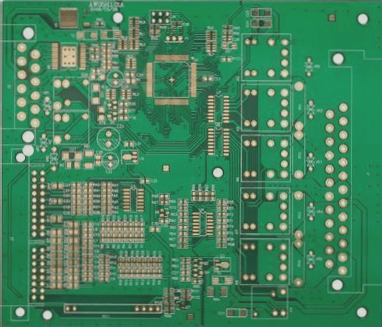Understanding Relay Specifications for Efficient Switching Systems
Introduction
When working with relays, it is essential to pay close attention to the specifications outlined in their datasheets. These values hold critical information that engineers must follow to ensure optimal functionality. Exceeding the relay’s limits can lead to a shortened lifespan, malfunctioning of the switching mechanism, and potential damage to the tested electrical unit. Let’s delve into some common relay specifications and their impact on switching systems.
Latest Updates:
- Stay updated on the newest relay technologies for enhanced performance.
- Learn about innovative relay applications in modern electronic systems.
Life Expectancy
Relays consist of moving parts that experience wear and tear during operation, eventually leading to failure. Understanding the life expectancy of a relay provides crucial insights into when mechanical failure may occur due to this wear and tear.
Recent Developments:
- Discover advancements in relay materials for increased durability.
- Explore strategies to extend the lifespan of electromechanical relays.
Relay Cold Switching Voltage
Relays are built to endure voltages higher than their rated maximum switching voltage when subjected to electrical signals. This parameter, known as cold switching voltage, is vital for proper relay operation.
Key Insights:
- Understand the significance of cold switching voltage in relay applications.
- Explore the role of PCB traces in handling high standoff voltages.
Maximum Switching Voltage
The maximum switching voltage indicates the highest voltage that can safely pass through a relay’s contacts. Operating relays at excessive voltages can lead to arcing and contact erosion, reducing their efficiency over time.
Expert Advice:
- Learn how to design circuits with proper voltage spacing for relay longevity.
- Consider voltage differences in complex relay-switching systems for optimal performance.
Minimum Switching Voltage
Some relays require minimal switching currents to function correctly, especially in “hot switching” scenarios where frequent contact wear occurs. Adequate voltage is necessary to ensure low resistance at the contact point, making reed relays ideal for such applications.
Insider Tips:
- Optimize relay performance by understanding minimum switching voltage requirements.
- Implement reed relays for efficient operation in high-wear switching environments.
Switch Current
Engineers should consider the maximum current a relay can handle safely during switching operations without damaging its components, such as the contacts. This information is typically available in the relay’s datasheet.
Pro Insights:
- Ensure reliable relay performance by adhering to switch current specifications.
- Explore advanced relay designs capable of handling varying current loads.
Carry Current
Carry current occurs when a relay’s contacts are closed, allowing the relay to manage currents higher than the switch current. However, exceeding the rated switch current can lead to heating and potential damage, emphasizing the need for cautious operation.
Best Practices:
- Learn how to manage carry currents safely to prevent relay overheating.
- Implement proper current reduction techniques for secure relay operation.
Carry Pulsed Current
Some relays are designed to handle pulsed carry currents, which can heat the contacts without causing arcing. Whether as a single event or repetitive pulses, caution is essential to avoid thermal issues like overheating.
Advanced Techniques:
- Explore the benefits of pulsed carry current in specialized relay applications.
- Understand the precautions needed when dealing with repetitive pulse currents.
Operation Time
The Importance of Relay Operation Time in Time-Sensitive Applications
Understanding the operation time of a relay is crucial for accurate measurements in time-sensitive applications. Failure to consider this can lead to inaccurate results, emphasizing the need for precise timing.
Power Rating and Its Impact on Relay Lifespan
One often overlooked aspect in relay usage is the power rating. Exceeding this rating can significantly affect the relay’s lifespan. For instance, exposing a relay to both maximum switch current and voltage simultaneously can lead to premature failure.
For example, a relay rated at 60W with a maximum switching voltage of 250V and a maximum switching current of 2A could experience a calculated power of 500W when both limits are pushed. To ensure longevity, it is essential to operate the relay within its specified power limits.
Key Points to Remember
- Relay datasheet specifications are crucial for proper usage and avoiding damage.
- Life expectancy helps predict relay failure due to wear over time.
- Maximum switching voltage indicates the safe voltage limit for the relay.
- Cold switching voltage measures the relay’s ability to handle higher voltages without an electrical signal.
- Minimum switching voltage is the threshold for effective relay operation.
- Switch current denotes the maximum safe current the relay can handle.
- Carry current is the current when relay contacts are closed, higher than the switch current.
- Pulsed carry current heats relay contacts without arcing, but avoid repetitive pulses to prevent overheating.
- Operation time includes processing and settling time for relay operation.
- Power rating signifies the maximum power the relay can handle for accurate performance.
- Matching the relay’s rated power with the switching system’s power ensures optimal operation.
If you have inquiries about PCBs or PCBA, reach out to us at info@wellcircuits.com.




